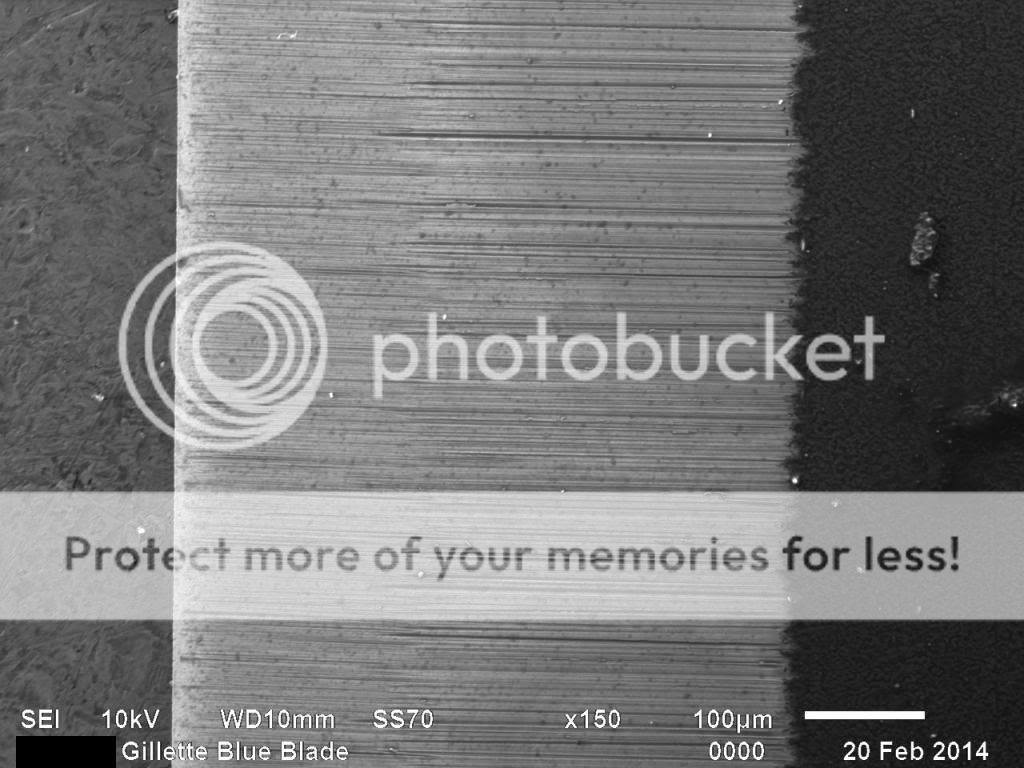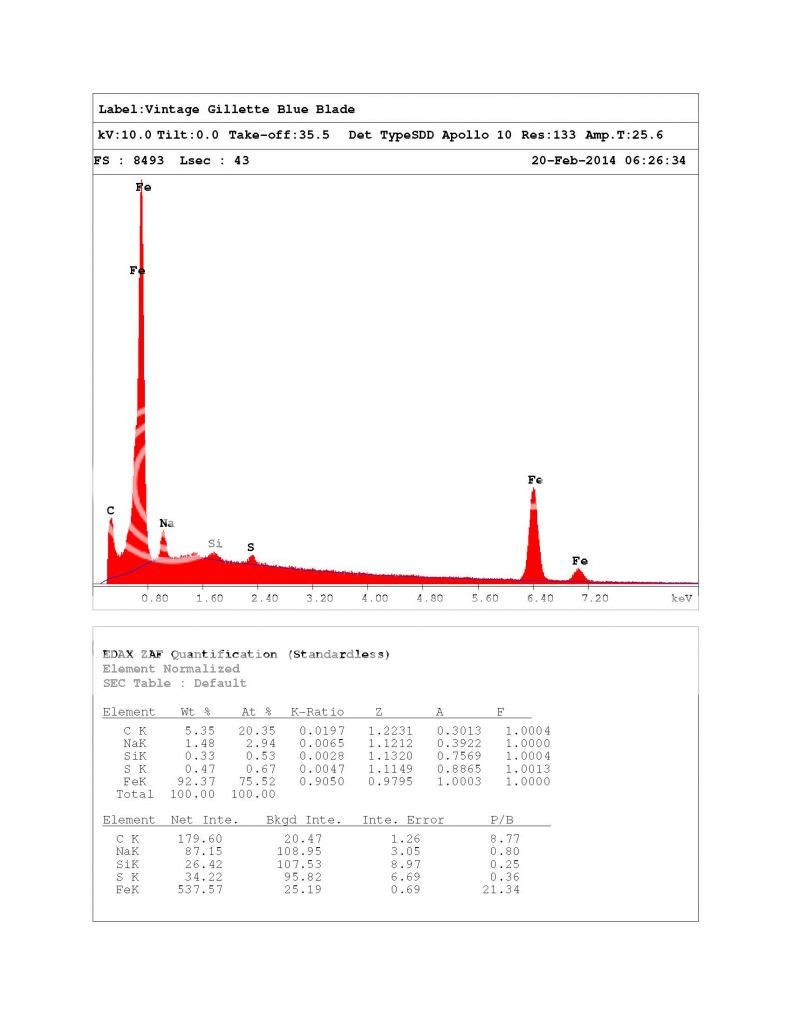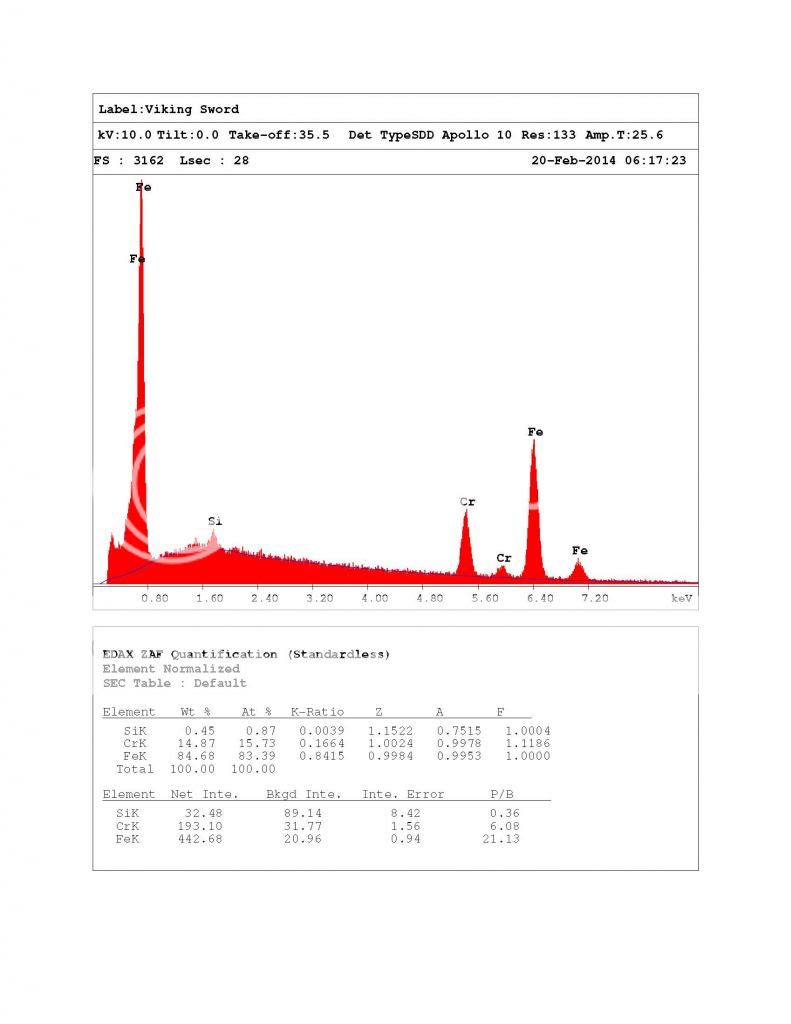This thread is the result of the generosity of Galaktus (Gillette Blue Blade) and mikemullin6 (Viking Sword) for sending me samples of the subjected blades. We all thank you very much!
First up, a vintage Gillette Blue Blade.
Fresh out of the package:

Cleaned with IPA:



On edge:



These blades should be a carbon steel, so there should be no chrome.
Here's the EDS (elemental) analysis:

The looks more or less as expected, but I was surprised to see so much sodium in the mix. I'm not sure if the sodium is an impurity picked up from the manufacturing process or par of the blade coating. Searching the internet, there appears to be a process that used sodium silicate as a corrosion inhibitor for mild steels, but I'm not sure if Gillette employed this process.
Looking at the on edge images, you can see how rough the sharpening of the edge is, much rougher than current production blades. Also, this blade is way thicker than a current blade, 30%+ thicker than most current blades.
On to the Viking Sword blade. This is an Israeli blade and is said to be the same or similar to the Personna Reds.
Here's the blade fresh out of the package:

Here's the blade after an IPA cleaning:



On Edge:



And the EDS Analysis:

I haven't done a closer investigation of the Personna Reds yet, but here is the freshly opened blade photo:

and the Persona Red EDS:

The Viking Swords and Personna Reds look pretty darn close. I'd say it's a pretty good chance that they are the same blade.
Thanks again for sending me the blades!
Enjoy.
First up, a vintage Gillette Blue Blade.
Fresh out of the package:

Cleaned with IPA:



On edge:



These blades should be a carbon steel, so there should be no chrome.
Here's the EDS (elemental) analysis:

The looks more or less as expected, but I was surprised to see so much sodium in the mix. I'm not sure if the sodium is an impurity picked up from the manufacturing process or par of the blade coating. Searching the internet, there appears to be a process that used sodium silicate as a corrosion inhibitor for mild steels, but I'm not sure if Gillette employed this process.
Looking at the on edge images, you can see how rough the sharpening of the edge is, much rougher than current production blades. Also, this blade is way thicker than a current blade, 30%+ thicker than most current blades.
On to the Viking Sword blade. This is an Israeli blade and is said to be the same or similar to the Personna Reds.
Here's the blade fresh out of the package:

Here's the blade after an IPA cleaning:



On Edge:



And the EDS Analysis:

I haven't done a closer investigation of the Personna Reds yet, but here is the freshly opened blade photo:

and the Persona Red EDS:

The Viking Swords and Personna Reds look pretty darn close. I'd say it's a pretty good chance that they are the same blade.
Thanks again for sending me the blades!
Enjoy.
Last edited:
